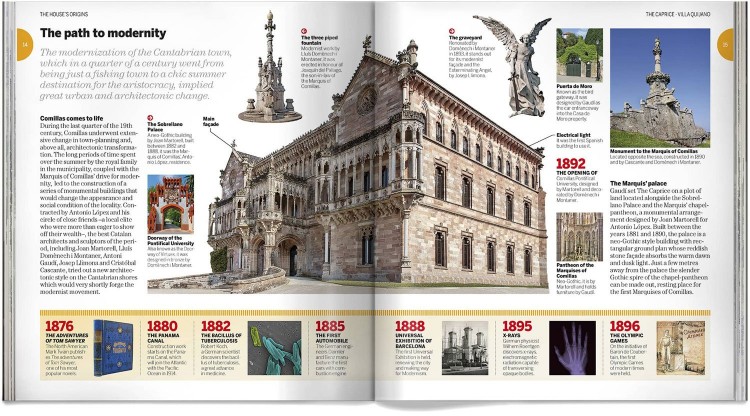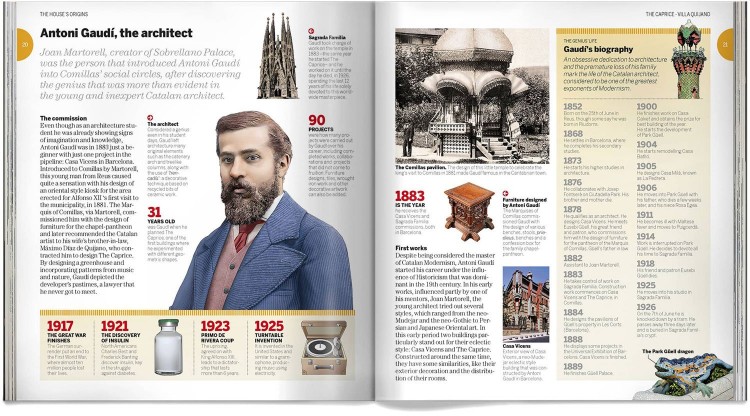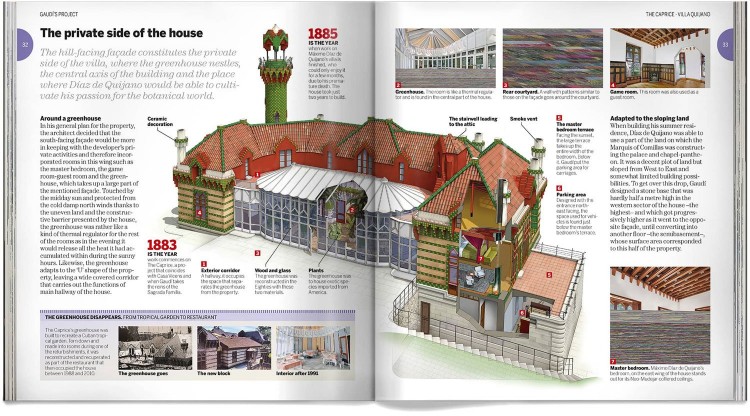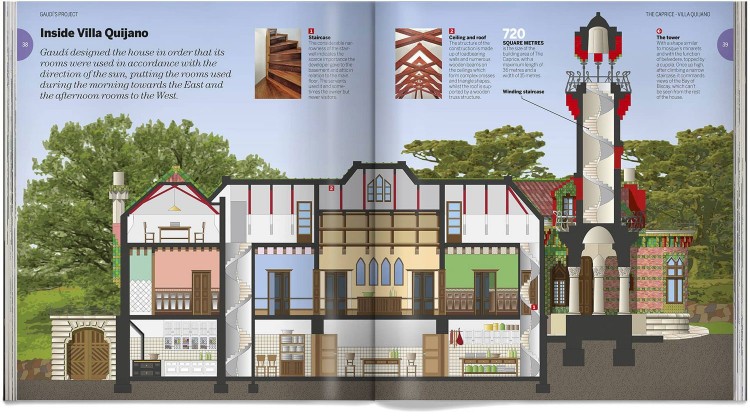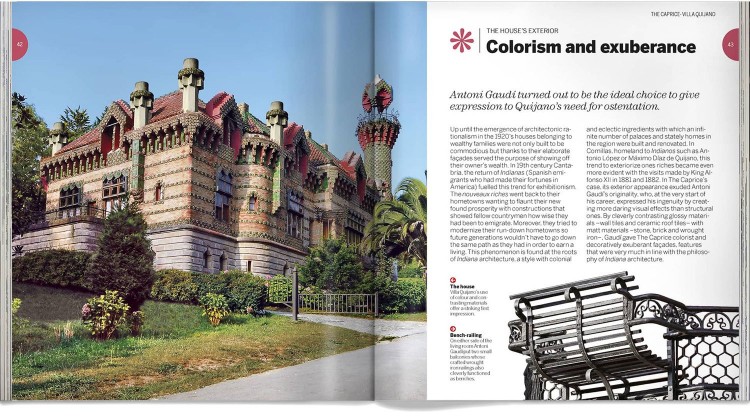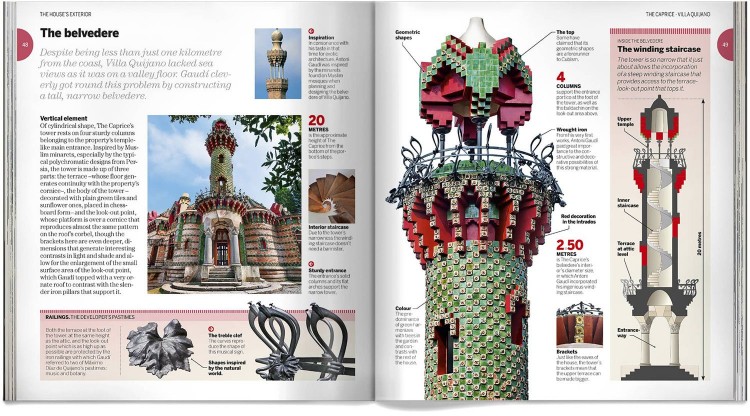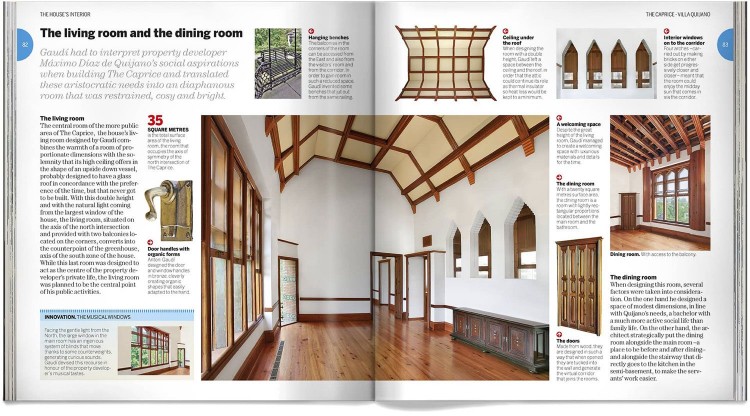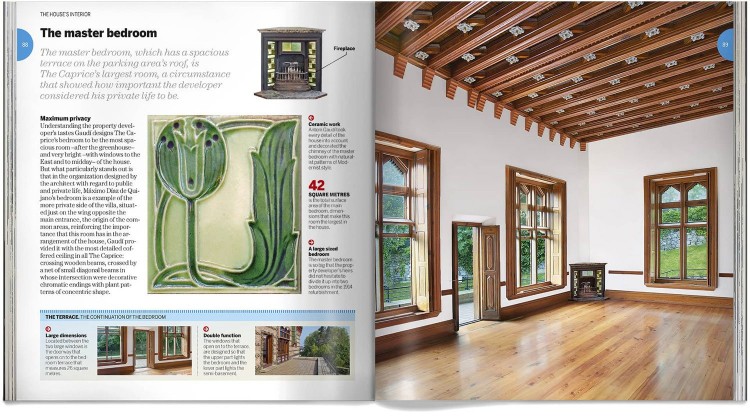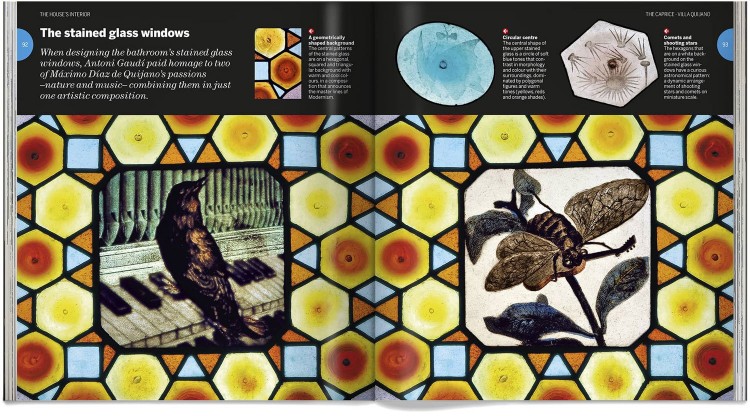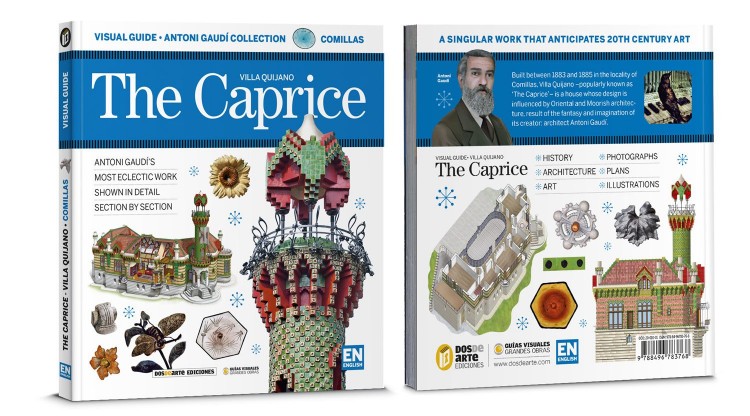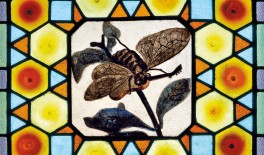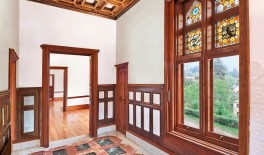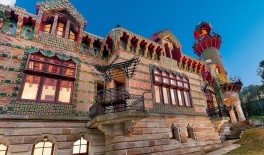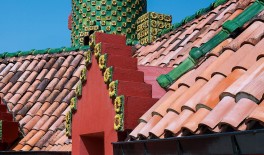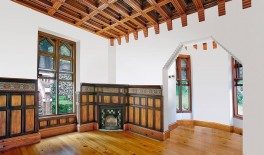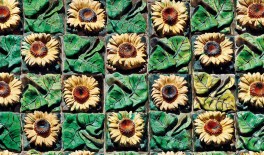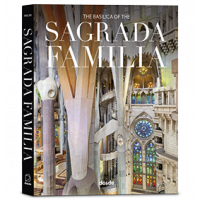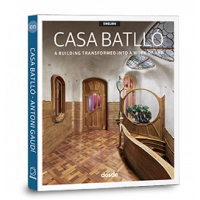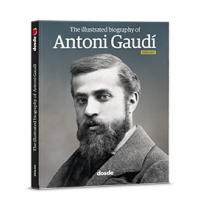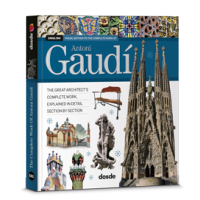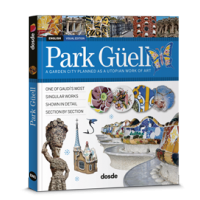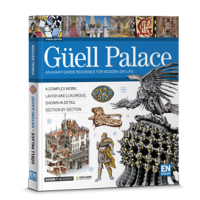The Caprice - Villa Quijano
A house with influences from Moorish architecture and Oriental art
RETURN
About the book The Caprice
Located in the Cantabrian town of Comillas, on the north Spanish coast, Villa Quijano –popularly known as El Capricho– was one of the first works of architect Antoni Gaudí, who, demonstrating his extraordinary capacity for creativity, designed a building packed with colour and fantasy.
Constructed between 1883 and 1885, commissioned by the lawyer Máximo Diaz de Quijano, the Caprice was designed influenced by Oriental and Arabian art, styles that marked Gaudí's early period. In a daring formal exercise, the architect combined a large variety of materials in order to create the ornamental details of the building, distinguished for their dynamism and chromatic wealth.
The book published by Dosde covers all the aspects related to the origins and the construction process of Villa Quijano, at the same time as it offers a detailed analysis of the symbolic elements and the architectonic innovations that have converted the Caprice into one of Gaudí's most singular works.
Constructed between 1883 and 1885, commissioned by the lawyer Máximo Diaz de Quijano, the Caprice was designed influenced by Oriental and Arabian art, styles that marked Gaudí's early period. In a daring formal exercise, the architect combined a large variety of materials in order to create the ornamental details of the building, distinguished for their dynamism and chromatic wealth.
The book published by Dosde covers all the aspects related to the origins and the construction process of Villa Quijano, at the same time as it offers a detailed analysis of the symbolic elements and the architectonic innovations that have converted the Caprice into one of Gaudí's most singular works.
Visual Edition
The Caprice - Villa Quijano
It includes exclusive digital content
Made with environmentally friendly paper
Official licensed product
Multilanguage: Available in 7 languages
About the book The Caprice
Located in the Cantabrian town of Comillas, on the north Spanish coast, Villa Quijano –popularly known as El Capricho– was one of the first works of architect Antoni Gaudí, who, demonstrating his extraordinary capacity for creativity, designed a building packed with colour and fantasy.
Constructed between 1883 and 1885, commissioned by the lawyer Máximo Diaz de Quijano, the Caprice was designed influenced by Oriental and Arabian art, styles that marked Gaudí's early period. In a daring formal exercise, the architect combined a large variety of materials in order to create the ornamental details of the building, distinguished for their dynamism and chromatic wealth.
The book published by Dosde covers all the aspects related to the origins and the construction process of Villa Quijano, at the same time as it offers a detailed analysis of the symbolic elements and the architectonic innovations that have converted the Caprice into one of Gaudí's most singular works.
Constructed between 1883 and 1885, commissioned by the lawyer Máximo Diaz de Quijano, the Caprice was designed influenced by Oriental and Arabian art, styles that marked Gaudí's early period. In a daring formal exercise, the architect combined a large variety of materials in order to create the ornamental details of the building, distinguished for their dynamism and chromatic wealth.
The book published by Dosde covers all the aspects related to the origins and the construction process of Villa Quijano, at the same time as it offers a detailed analysis of the symbolic elements and the architectonic innovations that have converted the Caprice into one of Gaudí's most singular works.
Readers opinions
(7)
RETURN
Reviews
(7)
Very satisfied with my purchase, thank you.
Very detailed books, amazing with diagrams and illustrations that provide a lot of information...Perfect books!
Your books are very well documented and prove to be very useful during my travels. If I want to find out even more detail I can consult other works, but they were of great assistance during my trip.
The book was perfect, thank you!
Very satisfied with their books, I can't fault them.
Great buy, thanks.
The illustrations and infographics are very good. Very good content to get to know the Caprice better.
Readers opinions
(7)
Very satisfied with my purchase, thank you.
Very detailed books, amazing with diagrams and illustrations that provide a lot of information...Perfect books!
Additional Information
- Additional Information
- Subtitle: A house with influences from Moorish architecture and Oriental art
- Weight (g): 325
- Binding: Paperback with flaps
- Size (cm): 17,5 x 19,5
- Author: Dosde
- Pages: 0
- Edition: Visual Edition
El capricho by Gaudí in Comillas
More commonly known as El Capricho or The Caprice, Villa Quijano is one of the most emblematic buildings in Comillas, a Cantabrian coastal resort 50 kilometres to the west of Santander.
Its owner, the lawyer Máximo Díaz de Quijano decided in 1883 to build his residence in the gardens that surround Palacio de Sobrellano and commissioned Gaudí with the project when he returned to his native Comillas, after having got rich during his time in America.
Comillas’ new summer residences were constructed with the additional purpose to show off their owners’ riches and social status and the Quijano Villa is a clear example of this, with an outer appearance that is lively and original.
Gaudí tinged The Caprice with touches from Nasrid, Mudejar, Gothic and Oriental styles, a combination that brought about a very eclectic work, which was characterized by its profusion of materials, tones and textures. The Caprice has become Comilla’s major emblem.
The modernization of the Cantabrian town, which in a quarter of a century went from being just a fishing town to a chic summer destination for the aristocracy, implied great urban and architectonic change.
The best Catalan architects and sculptors of the period, including Joan Martorell, Lluís Domènech i Montaner, Antoni Gaudí, Josep Llimona and Cristóbal Cascante, tried out a new architectonic style on the Cantabrian shores which would very shortly forge the modernist movement.
Its owner, the lawyer Máximo Díaz de Quijano decided in 1883 to build his residence in the gardens that surround Palacio de Sobrellano and commissioned Gaudí with the project when he returned to his native Comillas, after having got rich during his time in America.
Comillas’ new summer residences were constructed with the additional purpose to show off their owners’ riches and social status and the Quijano Villa is a clear example of this, with an outer appearance that is lively and original.
Gaudí tinged The Caprice with touches from Nasrid, Mudejar, Gothic and Oriental styles, a combination that brought about a very eclectic work, which was characterized by its profusion of materials, tones and textures. The Caprice has become Comilla’s major emblem.
Gaudí's first house in Comillas, Cantabria
An old fishing town, Comillas was transformed at the end of the 19th century into an aristocratic summer getaway thanks to the sponsorship of the Marquis of Comillas and his close friendship with Alfonso XII.The modernization of the Cantabrian town, which in a quarter of a century went from being just a fishing town to a chic summer destination for the aristocracy, implied great urban and architectonic change.
The best Catalan architects and sculptors of the period, including Joan Martorell, Lluís Domènech i Montaner, Antoni Gaudí, Josep Llimona and Cristóbal Cascante, tried out a new architectonic style on the Cantabrian shores which would very shortly forge the modernist movement.

